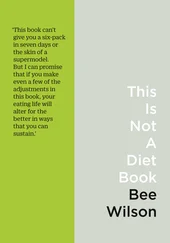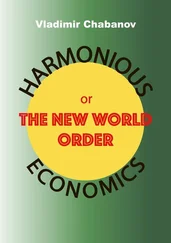Then there is neo-liberalism, which has been the dominant economic view since the 1980s (see below). It is very close to, but not quite the same as, classical liberalism. Economically, it advocates the classical minimal state but with some modifications – most importantly, it accepts the central bank with note issue monopoly, while the classical liberals thought that there should be competition in the production of money too. In political terms, neo-liberals do not openly oppose democracy, as the classical liberals did. But many of them are willing to sacrifice democracy for the sake of private property and the free market.
Neo-liberalism is also known, especially in developing countries, as the Washington Consensusview, referring to the fact that it is strongly advocated by the three most powerful economic organizations in the world, all based in Washington, DC, namely, the US Treasury, the International Monetary Fund (IMF) and the World Bank.
The 1870–1913 period did not actually see universal liberalism on the international front. In the heartland of capitalism, in Western Europe and the US, trade protectionism actually increased, not decreased.
The US became even more protectionist than before following the conclusion of the Civil War in 1865. Most Western European countries that had signed FTAs in the 1860s and the 1870s did not renew them and significantly increased tariffs after their expiry (they usually had a twenty-year lifetime). This was partly to protect agriculture, which was struggling with new cheap imports from the New World (especially the US and Argentina) and Eastern Europe (Russia and Ukraine) but also to protect and promote the new heavy and chemical industries. Germany and Sweden were the best examples of this ‘new protectionism’ – famously called the ‘marriage of iron and rye’ in Germany.
When the unequal treaties they had signed upon independence expired in the 1870s and the 1880s, the Latin American countries introduced rather high protective tariffs (30–40 per cent). However, elsewhere in the ‘periphery’, the forced free trade we talked about earlier spread much further. European powers competed for parts of the African continent in the ‘scramble for Africa’, while many Asian countries were also taken as colonies (Malaysia, Singapore and Myanmar by Britain; Cambodia, Vietnam and Laos by France). The British Empire expanded enormously, backed up by its industrial might, leading to the famous saying: ‘The sun never sets on the British Empire.’ Countries like Germany, Belgium, the US and Japan, which had not so far engaged in much colonialism, also joined in. [39] Germany took Tanzania, Namibia, Rwanda, Burundi, Togo and so on, although many of these were given to the winners in the First World War. The US got Cuba and the Philippines, while Belgium took Congo. Japan colonized Korea, Taiwan and Manchuria (the north-eastern part of China).
Not for nothing is this period also known as the ‘Age of Imperialism’.
The domestic front also saw a marked increase, not a decrease, in government intervention in the core capitalist countries. There was, indeed, a strong adherence to free- market doctrines in relation to fiscal policy (the balanced budget doctrine) and monetary policy (the Gold Standard). However, this period also saw an enormous increase in the role of the government: labour regulations, social welfare schemes, public investments in infrastructure (especially railways but also canals) and in education (especially the US and Germany).
The liberal golden age of 1870–1913 was thus not as liberal as we think. It was getting less liberal in the core capitalist countries, in terms of both domestic and international policies. Liberalization happened mostly in the weaker countries, but out of compulsion rather than choice – through colonialism and unequal treaties. In the only peripheral region that experienced rapid growth during this period, namely, Latin America, there was a vast increase in protectionism following the expiry of the unequal treaties. [40] Between 1870 and 1913, per capita income growth in Latin America saw a massive acceleration, from - 0.04 per cent during 1820–70 to 1.86 per cent at the end of this period, making the continent the fastest-growing region in the world (higher than that of the US, 1.82 per cent, in second place).
Capitalism trips up: the First World War and the end of the liberal golden age
The outbreak of the First World War in 1914 signalled the end of an era for capitalism. Until then, despite constant threats of revolt by the poor (the 1848 revolutions across Europe, the 1871 Paris commune, etc.) and economic problems (the Long Depression of 1873–96), the only way for capitalism had seemed to be up – and outwards.
This view was rudely shaken by the First World War (1914–18), which totally discredited the then popular view that the thickening web of commerce, which capitalism was building across the globe, would make wars between nations thus intertwined highly unlikely, if not totally impossible.
At one level, the outbreak of the First World War should not have been surprising, given that the globalization of the ‘high noon’ had been in large part driven by imperialism, rather than market forces. This meant that the international rivalry between the leading capitalist countries had a high chance of escalating into violent conflicts. Some went even further and argued that capitalism had reached a stage in which it could not be sustained without continuous outward expansion, which has to come to an end sooner or later, marking the end of capitalism.
Capitalism gets a rival: the Russian Revolution and the rise of socialism
This was the view most famously expounded in Imperialism: The Highest Stage of Capitalism by Vladimir Lenin, the leader of the Russian Revolution in 1917. The Russian Revolution was an even bigger shock to the defenders of capitalism than the First World War, as it led to the creation of an economic system that claims to undermine all the cornerstones of capitalism.
In the decade following the Russian Revolution, private property in the means of production (machines, factory buildings, land, etc.) was abolished. The big break came with the agricultural collectivization in 1928, in which the lands of large farmers, or kulaks, were confiscated and turned into state farms ( sovkhoz ) and small farmers were forced to join agricultural cooperatives ( kolkhoz ), which were state farms in all but name. Markets were eventually abolished and replaced by full-blown central planning by 1928, when the first Five Year Plan started. By 1928, the Soviet Union had an economic system that was definitively not capitalist. It ran without private ownership of means of production, profit motives and markets.
As for the other cornerstone of capitalism, wage labour, the picture was more complicated. Yes, in theory the Soviet workers were not wage labourers because they owned all the means of production – through state ownership or cooperatives. In practice they were indistinguishable from wage labourers in a capitalist economy, since they had little control over the way in which their enterprises and the wider economy operated, and their daily work experience was still subject to the same hierarchical relationship.
Soviet socialism was a huge economic (and social) experiment. Until then, no economy had been centrally planned. Karl Marx had left the details rather vague, and the Soviet Union had to make things up as it went along this untrodden path. Even many Marxists, especially Karl Kautsky, were sceptical about its prospects – socialism was, according to Marx himself, supposed to emerge from the most developed capitalist economies. Those economies were only a step away from a fully planned economy, it was argued, because their economic activities were already planned to a high degree by large enterprises and cartels of those enterprises. The Soviet Union – even its more developed European part – was a very backward economy in which capitalism had been hardly developed, where socialism really had no business emerging.
Читать дальше












